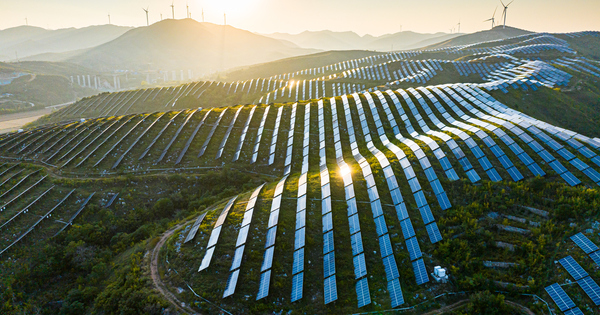
Record Surge in Global Renewable Energy Capacity Projected for 2024
The world is on the brink of a transformative energy revolution, with a record-breaking expansion in renewable energy capacity anticipated in 2024. This monumental growth is backed by international efforts to combat climate change, escalating investments in green technology, and an unprecedented political resolve to shift towards more sustainable energy sources.
Rising Demand for Green Energy
The need for clean energy solutions has never been more urgent. With global temperatures hitting record highs, many nations are doubling down on their commitments to cut carbon emissions and promote renewable resources. Renewable energy is increasingly recognized not only as a solution to environmental dilemmas but also as a catalyst for economic growth and job creation.
According to the International Energy Agency (IEA), the global renewables capacity is set to soar to new heights. The IEA predicts that a staggering 30% increase in global renewable capacity will be achieved by the end of 2024. This growth will be primarily driven by wind and solar power expansions.
Solar Power Leading the Way
Solar energy is at the forefront of this burgeoning renewable revolution. Thanks to a significant drop in costs and technological advancements, solar power is becoming more accessible and cost-effective than ever before. Many countries, from established economies to developing nations, are realizing the potential of solar power to meet their energy needs sustainably.
Investments in solar infrastructure are expected to dominate the new energy landscape. Solar panels are being installed on rooftops, in sprawling solar farms, and even floating on bodies of water. By 2024, solar energy is projected to cover a major share of the total additional renewable capacity, establishing it as a cornerstone of the global energy transition.
Wind Energy: A Powerful Contender
While solar energy is experiencing rapid growth, wind power is not far behind. Offshore and onshore wind projects are expanding at an impressive pace, propelled by technological innovations and favorable governmental policies.
Offshore wind farms, in particular, are gaining momentum as they can harness the stronger and more consistent winds found over the oceans. This makes them a highly profitable and efficient source of renewable energy. The development of larger and more efficient wind turbines is bolstering the sector further, leading to a large-scale deployment in regions across Europe, Asia, and North America.
Government Policies Fueling Growth
The remarkable boom in renewable energy capacity is, in part, due to strategic governmental interventions. Many countries are introducing tax incentives, subsidies, and favorable policies that encourage investments in renewable technologies. These policy frameworks are designed to accelerate the development and deployment of clean energy while phasing out reliance on fossil fuels.
Major economies such as the United States, China, and the EU are setting ambitious renewable energy targets. These initiatives not only facilitate large-scale projects but also inspire smaller nations to follow suit, fostering a collaborative global effort to address climate change.
Technological Innovations Driving Change
The rapid advancement of technology is another critical factor behind the anticipated surge in renewable energy. Innovations in energy storage, smart grids, and energy management systems are paving the way for more efficient renewable energy deployment.
Energy storage solutions, such as improved battery technology, are enabling more consistent and reliable integration of renewable energy into the grid. This helps to ensure a steady supply of energy even when natural conditions are less favorable, such as during cloudy or windless days.
Economic Benefits of Renewables
Aside from environmental benefits, the transition to renewable energy presents substantial economic advantages. The renewable energy sector is generating millions of jobs worldwide, boosting local economies and providing new opportunities in technological development and manufacturing.
Investing in renewables also reduces dependency on imported fuels, enhances energy security, and lowers exposure to volatile fossil fuel markets. Countries that embrace renewables are better positioned to thrive in a global economy that increasingly values sustainable practices.
Challenges and Considerations
Despite the promising outlook, the transition to renewable energy is not without its challenges. Integrating renewable sources into existing energy systems requires significant infrastructural upgrades and investment. There is also a need for more comprehensive energy policies that address supply variability and grid stability.
Moreover, the environmental impact of manufacturing and deploying renewable technologies must be carefully managed. Sustainable supply chain practices and recycling of renewable technology components will be essential to minimize adverse environmental effects.
A Renewable Future on the Horizon
The projected increase in renewable energy capacity for 2024 signifies a hopeful turning point in global energy strategies. The acceleration of renewable energy growth is a testament to the collective determination to tackle climate change and secure a sustainable future for generations to come.
As countries continue to invest in renewable technologies and infrastructure, the future of energy looks increasingly green. The combination of governmental support, technological innovation, and economic incentives promises to propel renewable energy to unprecedented heights.
In conclusion, the energy landscape is undergoing a radical transformation, with renewables at the helm. As we edge closer to 2024, the world is poised to witness a record surge in renewable energy capacity, marking a significant stride towards a greener, more sustainable planet.

